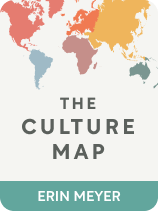

This article is an excerpt from the Shortform book guide to "The Culture Map" by Erin Meyer. Shortform has the world's best summaries and analyses of books you should be reading.
Like this article? Sign up for a free trial here .
What is affective trust? How do people from personal cultures approach professional relationships?
Affective trust is trust that develops based on how you feel about the other person. Affective trust is the trust that people of all cultures feel towards their family and friends. But in personal cultures, it’s also the cornerstone of professional relationships.
In this article, we’ll look at how members of personal cultures build trust and present some tips you can use to build trust in a personal culture.
How Personal Cultures Build Trust
In personal cultures, people build trust slowly. They don’t use icebreaker exercises, which develop only superficial trust. Instead, this type of culture values deeper, long-lasting trust.
Meyer contends that professional relationships in personal cultures don’t end the way that they do in cognitive cultures. Rather, professional relationships extend through years and through different companies.
(Shortform note: Researchers suggest that trust has three parts: competency, honesty (or integrity), and benevolence, the idea that someone is acting in your best interests. It’s likely that although both types of cultures value honesty, cognitive cultures place a higher value on competence and personal cultures place a higher value on benevolence. After all, in many cognitive cultures, the idea that a business is doing its best for you would be considered a joke. So if you’re working in a personal culture, focus on increasing your benevolence.)
If you fire Ivana in a personal culture, her ex-colleagues will likely hold a send-off party for her. They’ll certainly maintain a professional relationship with her, and might even follow her to her next company. The same may hold true for Ivana’s clients because they value her more than the company she works for.
(Shortform note: Another reason to focus on the quality of your business relationships when working cross-culturally is because firing practices differ across cultures. The United States famously hires employees at-will, so they can be fired for nearly any non-discriminatory reasons. But most countries have strict rules about whether someone can be fired at all—so you might be stuck with people you dislike for a long time.)
Critics of personal cultures think that it’s inefficient to spend so much time building these relationships. However, the emerging markets that tend to value personal trust do so for a very specific reason, according to Meyer. Emerging markets tend to have less reliable legal systems, so you don’t always have official recourse if somebody wrongs you. Therefore, to avoid being wronged, you need to get to know the true characters of the people you work with. Once you’ve invested time into building personal relationships, you’ll be more confident taking business risks with them (and because they know you personally, they’ll be less likely to be wrong).
(Shortform note: Investing time in your personal relationships at work has several benefits, especially if you have a “best friend.” Gallup research found that people with best friends at work reported seven times more engagement at their jobs. They were also healthier and did better work than their lonelier peers.)
Countries where affective or personal trust is the norm include the BRIC countries (Brazil, Russia, India, and China).
How to Build Trust in Personal Cultures
Visit. It will likely come as no surprise that it’s easiest to build trust with someone in person. If you are able, visit the people you’ll be working with. Leave room on the agenda for socializing. And when you arrive, follow the other strategies on this list to ensure it’s the most effective visit possible. Moreover, when people from different cultures come to meet you, entertain them no matter how busy you may be. Establishing a relationship now will help you avoid problems in the long run.
(Shortform note: In her book, Meyer describes how one American manager was confused why her European colleagues set up one-on-ones to meet with her when they were in town, even when they didn’t have anything to talk about. If you find such one-on-ones uncomfortable, flip the script and invite your colleagues to lunch or to drinks instead. You may feel more comfortable establishing the type of bond they desire in a more relaxed setting.)
Look for connections. The best way to build affective trust is to find similarities between you and your business partner. If none jump out at you, pay more attention. What do they have in their office? What can you find on social media? You might need to use loose connections or do some research on your own. For example, if they love movies, watch the most popular movies in their country right now and ask for their opinion.
(Shortform note: How can you build affective trust remotely? One management consultant’s strategies for your own team members include having a virtual space where people can hang out, such as a non-work Slack channel, or creating a buddy system to help onboard new virtual employees.)
Let your hair down. When someone from a personal culture invites you out, this is your cue to reveal your true self. They have turned their professional selves off; it is time for you to do the same. Don’t worry about being politically incorrect, saying the wrong thing, or getting too personal. Skip the business, and just have fun.
(Shortform note: Think you can’t be yourself because you don’t know these people yet? Think again. Dare to Lead argues that trust doesn’t come after vulnerability; rather, they occur simultaneously. Specifically, when someone reaches out to you and you choose to engage with and respond to their vulnerability (instead of ignoring it), you earn their trust and the right to be vulnerable with them in turn. So go ahead and be vulnerable!.)
Drink. In many cultures, drinking alcohol together is essential to forming business relationships. This is especially true of East Asian cultures, where frank communication is discouraged in the boardroom. By drinking alcohol and letting yourself go after business hours, you show that you have nothing to hide and are therefore trustworthy. But never discuss your drunken antics elsewhere. What happens at the bar stays at the bar.
(Shortform note: Meyer describes in detail the role alcohol plays in Japanese business culture. But there are indications this role is changing as new bars in Tokyo serve exclusively non-alcoholic drinks. If you don’t drink but need to build relationships in a culture that values alcohol, research similar establishments there.)
Spend time on meals. Meals shared with people from personal cultures can stretch to several hours. Remember that these are essential to building trust, so resist the urge to classify them a waste of time. Meyer recommends using this opportunity to get to know your colleagues personally. And if you happen to be hosting someone from a personal culture, spend more time planning and sharing the meal than you might otherwise.
(Shortform note: To reduce the chances of accidentally offending your business partners, brush up on the culture’s table manners. And remember that the length of the meal doesn’t always reflect how much food is provided. If you’re used to scarfing down lunch at your desk, pace yourself. Otherwise, you might find yourself waiting with an empty plate for hours while your colleagues savor their food.)
Use the phone. Emails might be efficient, but they’re not good at deepening personal relationships. Meyer suggests calling people from personal cultures, especially if you’re still in the process of establishing your personal relationship. If you’re speaking with someone new or someone you haven’t spoken to in a long time, you may need to have several phone conversations before bringing up the business matter at all.
(Shortform note: Meyer’s book doesn’t mention video chatting, but it might be your best option. One study of young women found that after meeting in-person, video chat was the format in which they felt most bonded to their friends. You may argue that a study between friends is not applicable to business relationships, but this is precisely the type of trust that is needed in personal cultures. That said, another study showed that having Zoom meetings is less efficient than simply getting on a phone call, so consider the purpose when choosing your communication method.)
Follow the other person’s cues. When you do call your business partner, don’t merely exchange pleasantries for five minutes before getting to the point of the conversation. While this may feel natural to you, you may offend your foreign colleague. Avoid such misunderstandings by letting your business partner direct the conversation. Meyer also recommends using a similar strategy in your emails by imitating the structure of the emails you receive. For example, if they always write a long paragraph asking about your health, add one to the emails you send too.
(Shortform note: This likely works due to social mirroring, the idea that people who like each other copy each other. (We discussed this previously in our leadership chapter.) Just be subtle when you mirror someone. If they notice you’re doing it, they might feel manipulated.)
Utilize your network. According to Meyer, cold calling and emailing tend to be ineffective strategies in personal cultures. If you need to speak to someone you don’t know from a personal culture, go through your network. You are far more likely to receive a response if you can find a mutual connection to introduce you. This strategy is especially effective in Arab cultures.
(Shortform note: If you have no connections in common, use your knowledge of different cultures to your advantage. For example, you might find through Linkedin that your desired contact has a colleague from a cognitive culture. You may have better luck cold calling or emailing them and asking for an introduction once you’ve established a rapport, instead of going to your desired contact directly.

———End of Preview———
Like what you just read? Read the rest of the world's best book summary and analysis of Erin Meyer's "The Culture Map" at Shortform .
Here's what you'll find in our full The Culture Map summary :
- The eight axes you can use as a framework to analyze cultural differences
- How to better relate to those of another culture to accomplish business goals
- How the Vikings have more gender equality than we see today






